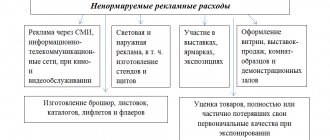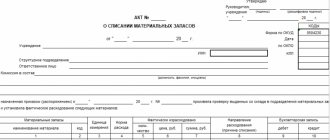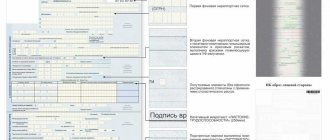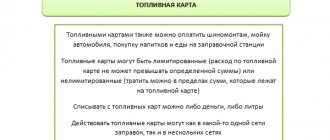Regulatory regulation
According to the Federal Law of December 29, 2012 No. 273-FZ “On Education in the Russian Federation,” organizations engaged in educational activities have the right to carry out these activities at the expense of individuals and (or) legal entities under agreements for the provision of paid educational services (clause 1 Article 101 of Law No. 273-FZ).
According to paragraph 3 of Article 54 of Law No. 273-FZ, in an education agreement concluded upon admission to study at the expense of an individual and (or) legal entity, in addition to the main characteristics of education, including the form of education, duration of study, the full cost of paid educational services and the procedure for their payment. An increase in the cost of paid educational services after the conclusion of such an agreement is not allowed, with the exception of an increase in the cost of these services taking into account the level of inflation provided for by the main characteristics of the federal budget for the next financial year and planning period.
In particular, in the approximate form of an education agreement for training in educational programs of secondary vocational and higher education, approved. Order of the Ministry of Education and Science of Russia dated November 21, 2013 No. 1267 indicates the full cost of educational services for the entire period of study.
The duration of training can be up to a year or more than a year and, as a rule, is rolling - it begins in one year and continues (ends) in the next.
From 01/01/2020, when reflecting in the accounting records income, expenses, facts of economic life, and other accounting objects arising as a result of the conclusion by the accounting entity of contracts for the provision of paid services, the validity of which exceeds one year (hereinafter referred to as long-term contracts), and the fulfillment by the accounting entity works (services) under long-term contracts, the federal accounting standard for public sector organizations “Long-term contracts”, approved. by order of the Ministry of Finance of Russia dated June 29, 2018 No. 145n. The standard can also be applied to contracts whose duration does not exceed one year, but the start and end dates of which fall on different reporting periods, if this is provided for by the accounting policy of the accounting entity (unified accounting policy when centralizing accounting) (clause 5 of the Standard “Long-term agreements").
Thus, contracts for the provision of paid educational services, the validity of which exceeds one year, are subject to the Long-Term Contracts Standard. In addition, if this is provided for by the accounting policy of the institution, the Standard covers “transitionable” education agreements, the start and end dates of which fall on different reporting periods (different years).
In accordance with paragraph 11 of the Standard “Long-term contracts”, upon signing a long-term contract, but no later than the month following the month in which it was concluded, the accounting entity reflects settlements with debtors for sales income for the entire term of the long-term contract in correspondence with the balance sheet accounts for future income. Income under a long-term agreement is recognized as part of income from the sale of the current period, segregated in the corresponding accounts of the Working Chart of Accounts of the accounting entity, evenly (monthly) until the expiration of the long-term agreement with a simultaneous reduction in the amounts of future income. If the performance of work (provision of services) under a long-term contract is carried out unevenly, the accounting entity has the right to apply a different procedure for calculating sales income provided for by the accounting policy of the accounting entity.
Example No. 1. Suppliers and contractors
GBOU DOD SDYUSSHOR "ALLUR" entered into an agreement with the supplier LLC "Seller" in the amount of 100,000 rubles for the purchase of sports equipment using subsidies for the implementation of government assignments. According to the terms of the agreement, an advance payment in the amount of 30,000.00 rubles is provided. The accountant made entries for payments to suppliers:
| Operation | Debit | Credit | Amount, rub. |
| The advance payment was transferred to the settlement account of the supplier LLC “Seller” | 4 206 31 560 | 4 201 11 610 | 30 000,00 |
| The institution received equipment | 4 106 31 310 | 4 302 31 730 | 100 000,00 |
| The advance payment for the supply of sports equipment has been credited | 4 302 31 830 | 4 206 31 660 | 30 000,00 |
| The balance for the sports equipment is transferred to the supplier | 4 302 31 830 | 4 201 11 610 | 70 000,00 |
Accounting for payments for educational services
In accordance with the Instructions for the use of the Unified Chart of Accounts, approved. by order of the Ministry of Finance of Russia dated December 1, 2010 No. 157n, to account for calculations of the amounts of income (receipts) accrued by the institution at the time of the emergence of claims against their payers (for the amounts of future income), arising by virtue of contracts, agreements, as well as when the subject of accounting fulfills the assigned in accordance with the legislation of the Russian Federation, the corresponding analytical accounts of balance sheet account 205 00 “Calculations on income” are applied to its functions, as well as advance payments received from payers. To account for calculations of income from the provision of paid educational services, analytical account 205 31 “Calculations of income from the provision of paid services (work)” is used.
Analytical accounting of settlements on receipts is carried out in the context of types of income (receipts) by payers (groups of payers) and the corresponding settlement amounts in the Funds and Settlements Accounting Card (f. 0504051) and (or) in the Journal of Settlements with Debtors for Income (f. 0504071).
To record the amounts of income related to the current reporting period, account 401 10 “Income of the current financial year” is intended.
To account for the amounts of income accrued (received) in the reporting period, but relating to future reporting periods, taking into account the provisions of the Standard “Long-term contracts”, account 401 40 “Deferred income” is used.
In accordance with Appendix No. 2 to the Instructions for the Application of the Chart of Accounts for Budget Accounting, approved. By order of the Ministry of Finance of Russia dated December 6, 2010 No. 162n, when maintaining records for account 205 31, classification characteristics of accounts (KPS) are used indicating the income classification code (KDB). In accordance with Instruction No. 162n, Instruction No. 174n (approved by order of the Ministry of Finance of Russia dated December 16, 2010 No. 174n), Instruction No. 183n (approved by order of the Ministry of Finance of Russia dated December 23, 2010 No. 183n) in account numbers 205 31, subarticles of articles of KOSGU 560 are used “Increase in accounts receivable” - on debit and 660 “Decrease in accounts receivable” - on credit in accordance with the type of counterparty.
In the accounting of a budgetary, autonomous institution, the accrual of income under long-term contracts for the provision of paid educational services is reflected by the entry:
Debit KDB 2 205 31 56Х Credit KDB 2 401 40 131,
where KDB - digits 1-17 of the account number of the type KDB (classification of budget income) with the analytical group of subtype of income 130 “Income from the provision of paid services (work), compensation of costs”; X - code of the type of payer for educational services.
Recognition of income as part of income from sales of the current period is reflected by the entry:
Debit KDB 2,401 40,131 Credit KDB 2,401 10,131.
The procedure for generating salary transactions in a budget organization
In the budgetary sphere, to detail the flow of funds, a classification of operations of the general government sector (abbreviated as KOSGU) has been developed. In this case, when generating transactions, a code should be added to the accounting account that determines the type of receipt or disposal of an accounting object in accordance with this classification.
In particular, to calculate salaries, an accountant needs to use the following KOSGU codes:
- 211 - “Salaries”: here it is necessary to include expenses for all payments of funds in accordance with contractual obligations; in addition, it reflects various deductions from the employee’s accrued salary (union membership dues, personal income tax, compensation for moral damage caused by the employee, alimony, etc.);
- 212 - “Other payments”: used to accrue expenses for payment of additional payments and compensations not related to wages (for example, daily allowances for business trips, compensation for the use of a car, etc.);
- benefits, for example, those paid at the expense of the Social Insurance Fund to employees, are classified under subsection 213 (including maternity benefits, one-time benefits for the birth of a child, monthly child care benefits, etc.).
Also, for the correct distribution of cash flow types, we will need the following KOSGU:
- 730 - “Increase in other accounts payable”;
- 830 - “Reduction of other accounts payable”;
- 610 - “Disposal from budget accounts.”
Read about how the budget accounting account number is linked to the value of KOSGU here.
CLARIFICATIONS from ConsultantPlus: As of 03/09/2021, changes have been made to KOSGU. In terms of wages, for example, subsection 211 should include compensation for unused vacation upon dismissal. And from subarticle 2013, benefits that employers paid at the expense of the Social Insurance Fund were removed. Read more about the changes in ConsultantPlus. If you do not have access to the K+ system, get a trial online access for free.
Accounting for settlements in “1C: Public Institution Accounting 8” edition 2
In edition 2 of the program “1C: Accounting for a State Institution 8”, an active balance sheet account 205.31 “Calculations for income from the provision of paid services (work)” is used to keep records of educational services. For account 205.31, the transaction log number is set to “5”. On account 205.31, analytical accounting is kept for payers for educational services (Counterparties sub-account of the Counterparties directory type), according to contracts (Contracts sub-account of the Contracts directory type and other grounds for the occurrence of obligations).
Accounting for the amounts of income related to the current reporting period is kept in the program on account 401.10 “Income of the current financial year.”
Accounting for the amounts of income accrued (received) in the reporting period, but relating to future reporting periods, is kept in account 401.40 “Deferred income”. In account 401.40, analytical accounting is maintained by type of services (sub-account Nomenclature of the Nomenclature directory type), in the context of contracts (sub-account Contracts of the type reference Contracts and other grounds for the occurrence of obligations).
For accounts in group 401.00 “Financial result of an economic entity”, the transaction journal number is set to “8”.
In BSU2, the Educational Services subsystem is designed to automate the accounting of settlements for educational services. To work with the Educational Services subsystem, in the Accounting Parameters Settings (Section Administration, Accounting Parameters Settings command) on the Specialized Subsystems page, you must set the Accounting for payments for educational services flag. As a result, the Paid education section with objects of the Educational services subsystem will appear in the Program Section Panel (see figure).
The Educational Services subsystem includes reference books:
- Students - to maintain a list of students of an educational institution;
- Student states - to store information about possible student states, such as "enrolled" or "dismissed", and to establish a connection between the state and the need to perform payment calculations;
- Benefits for students and pupils - to maintain a list of benefits that are established for preferential categories of citizens;
- Types of orders (education), Fields of orders (education) - are intended for creating and storing a list of types of orders, as well as adding and setting up fields for entering information in an order of each type;
- Specialties (education) - allows you to maintain a list of specialties for which students are trained in an educational organization;
- Training courses - for maintaining a list of courses (“First course”, “Second course”, etc.);
- Student groups - to maintain a list of student groups at the faculty;
- Types of charges to students for other services - to maintain a list of additional services provided to students;
- Payment schedules - for storing payment schedules used in an educational institution, indicating the payment period, payment amount and the period of study for which it is made. An institution may use multiple schedules. For example, payment schedules for different faculties may differ.
The listed reference books are located in the Paid training section (see figure).
Drawing
Documentation of transactions for accounting settlements for educational services
To keep records of educational services at BSU2, documents are used (see figure):
- Order (education);
- Student attendance sheet;
- Charges for education services;
- Payment distribution (education);
- Accrual of deferred income (education);
- Adjustment of deferred income (education).
The Order (education) document is used to change the status of students, for example, Enrollment, Expulsion, as well as to assign benefits, payment schedule, payment amount, etc.
The Student Attendance Sheet document is intended for generating and printing a Student Attendance Sheet.
The document Accrual of deferred income (education) is intended to accrue in accounting the amounts of income from the provision of educational services under long-term contracts that relate to future reporting periods.
The document Accrual for education services is used to reflect in accounting:
- accrual of income under short-term contracts for the provision of educational services;
- recognition of future income under long-term contracts for the provision of educational services as income of the current period (evenly or unevenly according to the schedule).
The document Distribution of Payments (Education) is used to reflect in the accumulation register of Payments to Students information about the payment for a specific student received by the institution for educational services.
To analyze, check the correctness and correct the created Payment Distribution (Education) documents, as well as for their automatic generation, you can use the Payment Distribution Assistant (Education).
The document Adjustment of deferred income (education) is intended to reflect in accounting the adjustment of deferred income under long-term education contracts with students, including in case of early termination of the contract.
Receipt of payment is documented with the documents Cash receipt order (Cash section, Organization Cashier command), in case of receipt at the institution's cash desk, or Cash receipt (Cash section, Settlement and payment documents command), in case of non-cash transfer.
The refund of the fee is formalized by the documents Cash disbursement order (Cash section, Cashier of the organization team), in case of issuing cash from the institution's cash desk, Request for return or Payment order (Cash section, Settlement and payment documents command) - when transferring by bank transfer .
It is important that many documents are filled out automatically based on the data available in the program.
Subaccounts to reflect prepayments by group
| Group account code | Account group name |
| 206 10 000 | Calculations for advances on wages, accruals on wage payments |
| 206 20 000 | Calculations for advances for work and services |
| 206 30 000 | Calculations for advances on receipt of non-financial assets |
| 206 40 000 | Calculations for advance gratuitous transfers of a current nature to organizations |
| 206 50 000 | Calculations for gratuitous transfers to budgets |
| 206 60 000 | Social Security Advance Settlements |
| 206 70 000 | Calculations for advances for the purchase of securities and other financial investments |
| 206 80 000 | Calculations for advance gratuitous transfers of capital nature to organizations |
| 206 90 000 | Calculations for advances on other expenses |
These accounting accounts reflect mutual settlements with suppliers in the context of organizations, individual entrepreneurs or individuals. It is recommended to carry out accounting for each counterparty in the context of agreements and contracts. This approach to organizing accounting will reduce the number of violations of current legislation in the field of procurement and when calculating tax obligations, such as VAT.
Before preparing financial statements and reflecting settlements with suppliers and contractors on the balance sheet, the institution must conduct a special inventory of debts (liabilities). The procedure is mandatory when preparing an annual report. It is mandatory to carry out an inventory before the reorganization or liquidation of a government agency. The organization has the right to independently initiate an inventory of settlements with suppliers and contractors before the due date. For example, when disputes arise or supporting documents are lost.
Disclosure of information on settlements in accounting registers and management reporting
For regulated accounting of calculations for paid training, the program uses the following registers:
- Funds and settlements card (f. 0504051);
- Journal of transactions with debtors for income (f. 0504071).
The regulated register Card for accounting of funds and settlements (f. 0504051) (section Accounting and reporting, command Accounting registers, command Card for accounting for funds and settlements) is an accounting register of movement for a specific accounting account at the transaction level. With its help, you can analyze movements on accounts 205.30, 401.10 and 401.40.
The regulated register Journal of transactions with debtors for income (form 0504071) (section Accounting and reporting, command Accounting registers, command Journal of transactions (form 0504071), transaction journal number “5”) is used to record transactions for the accrual of income by an institution. Entries in the Journal of transactions with debtors for income are made on the basis of primary accounting documents for the accrual of income and (or) their receipt (payment).
The program provides for the generation of the following reports on educational services:
- Analysis of accruals for education services;
- Statement of payers;
- Statement of education calculations (consolidated);
- Statement of education calculations (detailed);
- Arrears of scheduled payment;
- Student Personnel Data Report;
- Payer per student;
- Student attendance sheet;
- Students by payer.
You can analyze settlements with students under long-term contracts in the reports:
- Arrears of scheduled payment;
- Monitoring the execution of contracts - the report is opened using the hyperlink Monitoring execution from the contract with the student, and for all contracts - by the corresponding command in the section Planning and authorization - Reports - Reports on planning and authorization;
- Debt analysis - the report opens using the hyperlink Debt analysis from the agreement with the student, and for all contracts - by the corresponding command in the section Planning and authorization - Reports - Planning and authorization reports;
- Statement of payments for education;
- Act of reconciliation of mutual settlements - section Accounting and reporting - Settlements - Act of reconciliation of mutual settlements.
| 1C:ITS Budget On the first application of the federal accounting standard for public sector organizations “Long-term agreements” (approved by order of the Ministry of Finance of Russia dated June 29, 2018 No. 145n), see the article “Paid training - the first application of the Standard “Long-term agreements””. |
The procedure for accounting for settlements under long-term education contracts
The following procedure for accounting for settlements under long-term education contracts at BSU2 is proposed:
- Create the required number of payment schedules used in the educational institution, indicating the payment period, payment amount and the period of study for which it is made.
- Create student registration cards; in each student’s card, indicate information about the payer and the agreement.
- Enter information about student enrollment in the educational institution. Assign a payment schedule to each student (it is recommended, but not mandatory; you can fill out the schedule directly in the document for calculating deferred income).
- Upon signing a long-term contract, accrue deferred income for the full cost of the contract for the entire period of study.
- In accordance with the given procedure for accounting for income, calculate and recognize income of the current period for educational services.
- Reflect the payment under the education agreement.
- If necessary, make adjustments or termination of the long-term education agreement.
- Create accounting registers.







